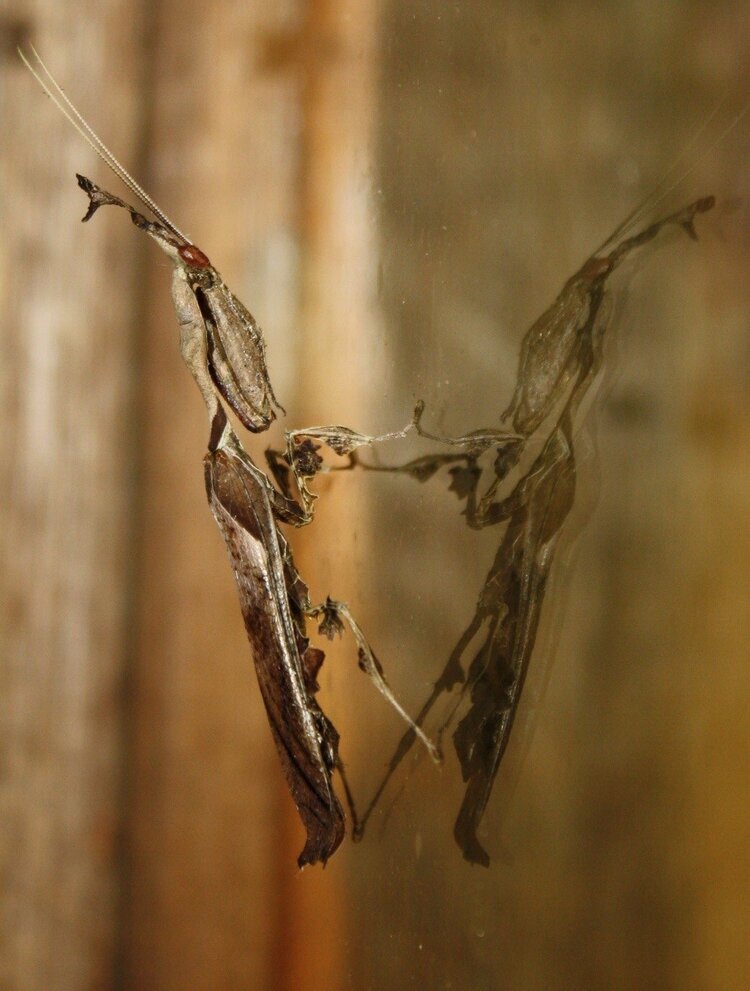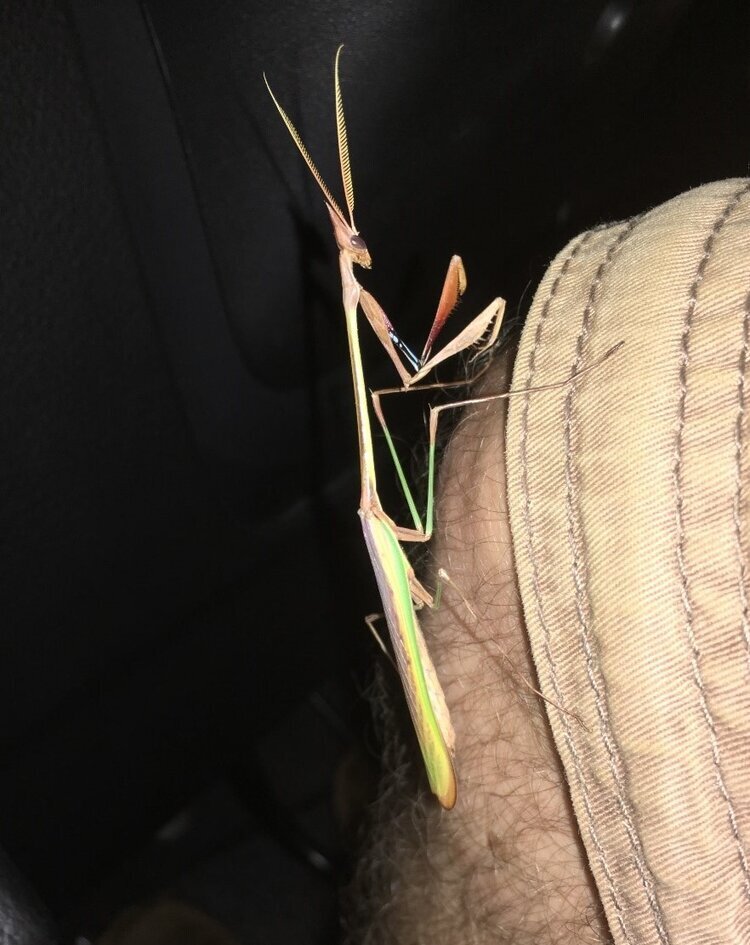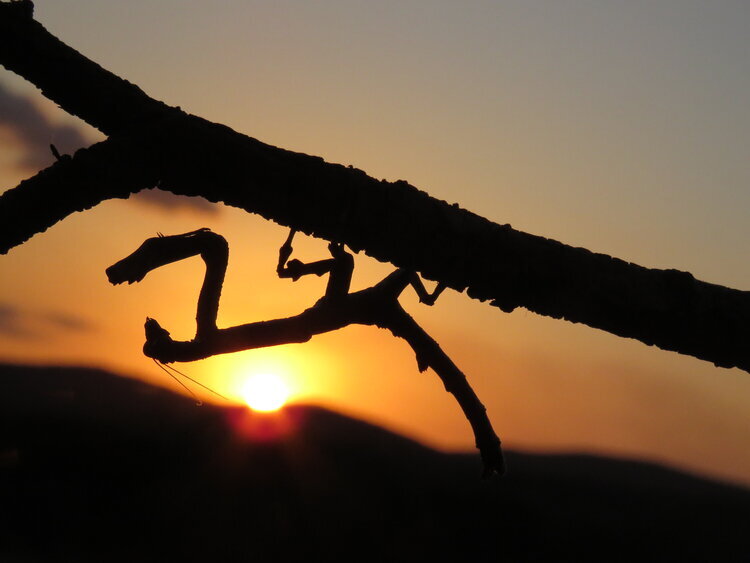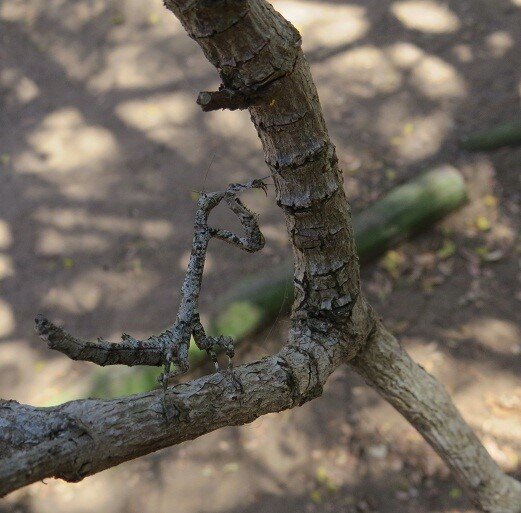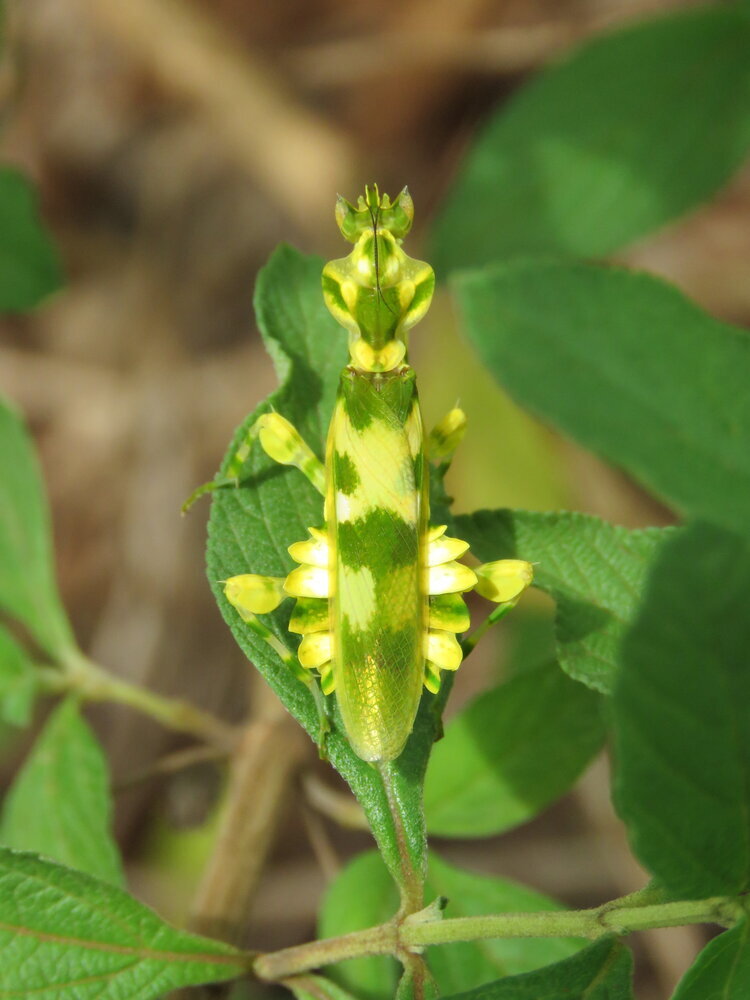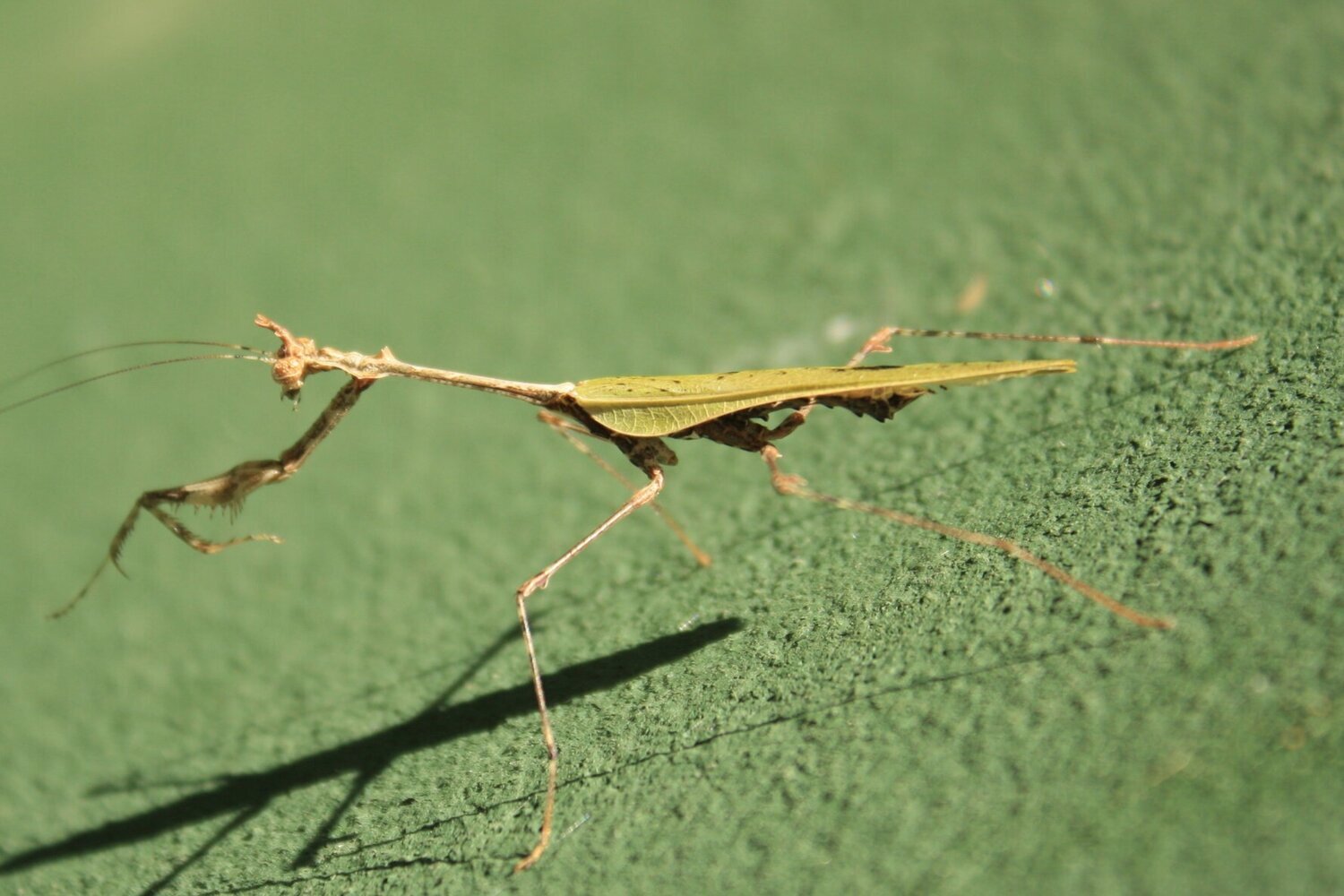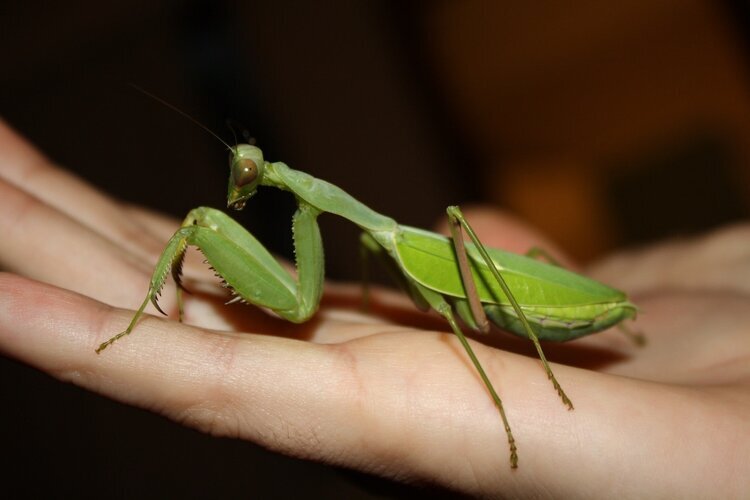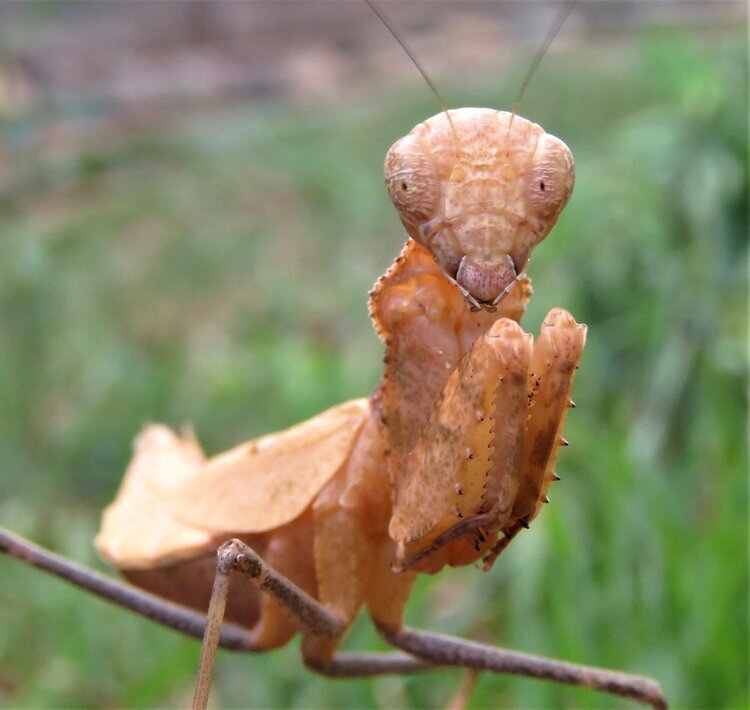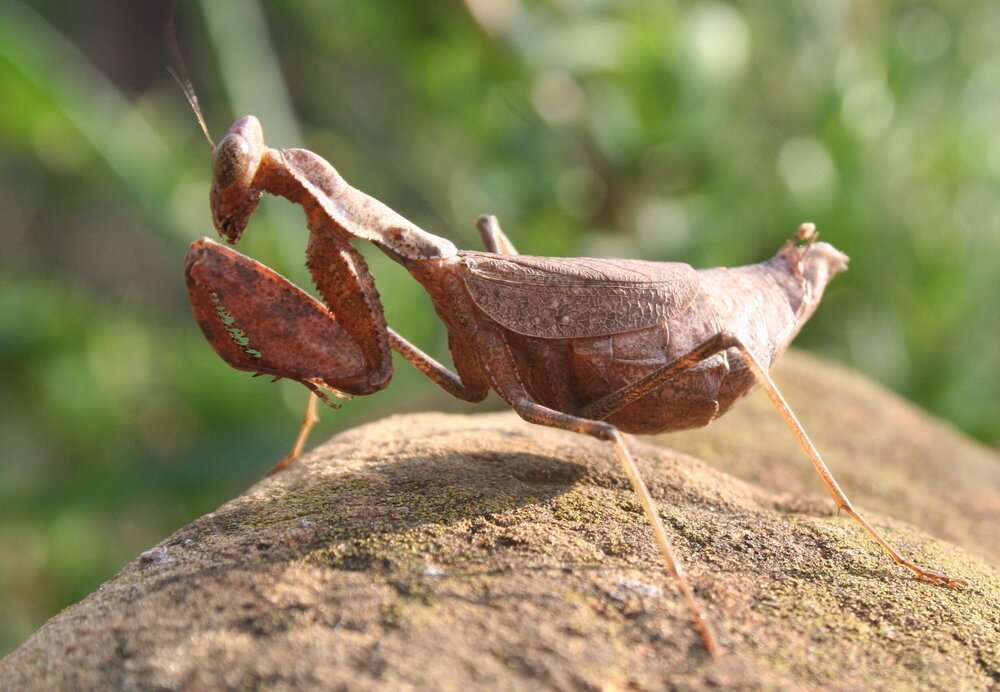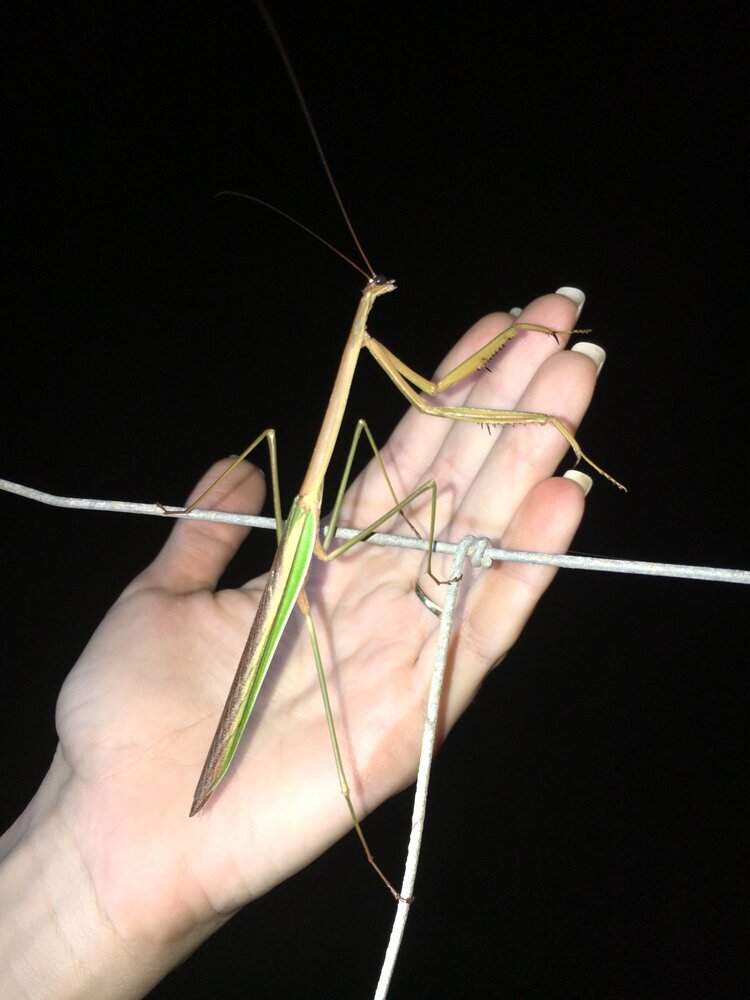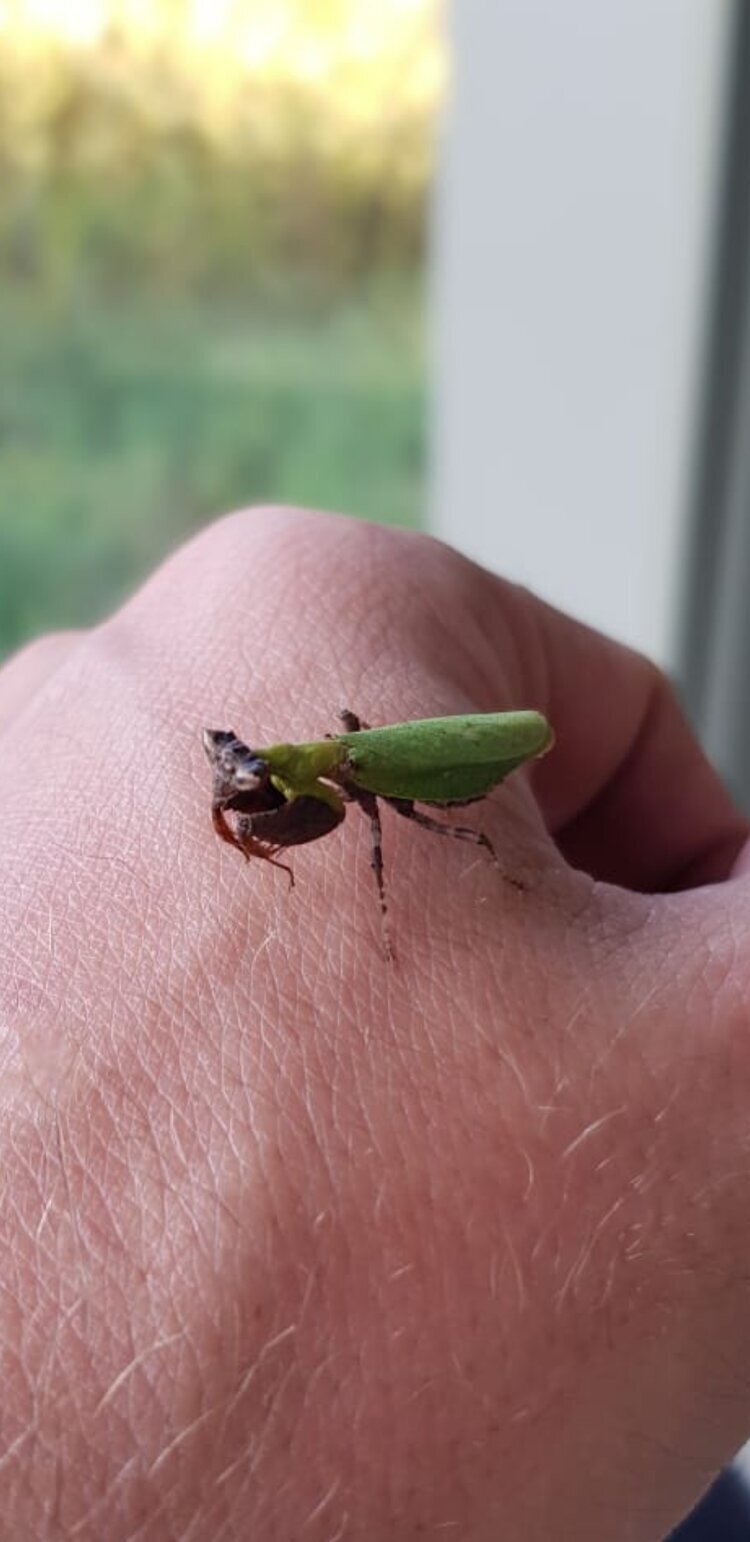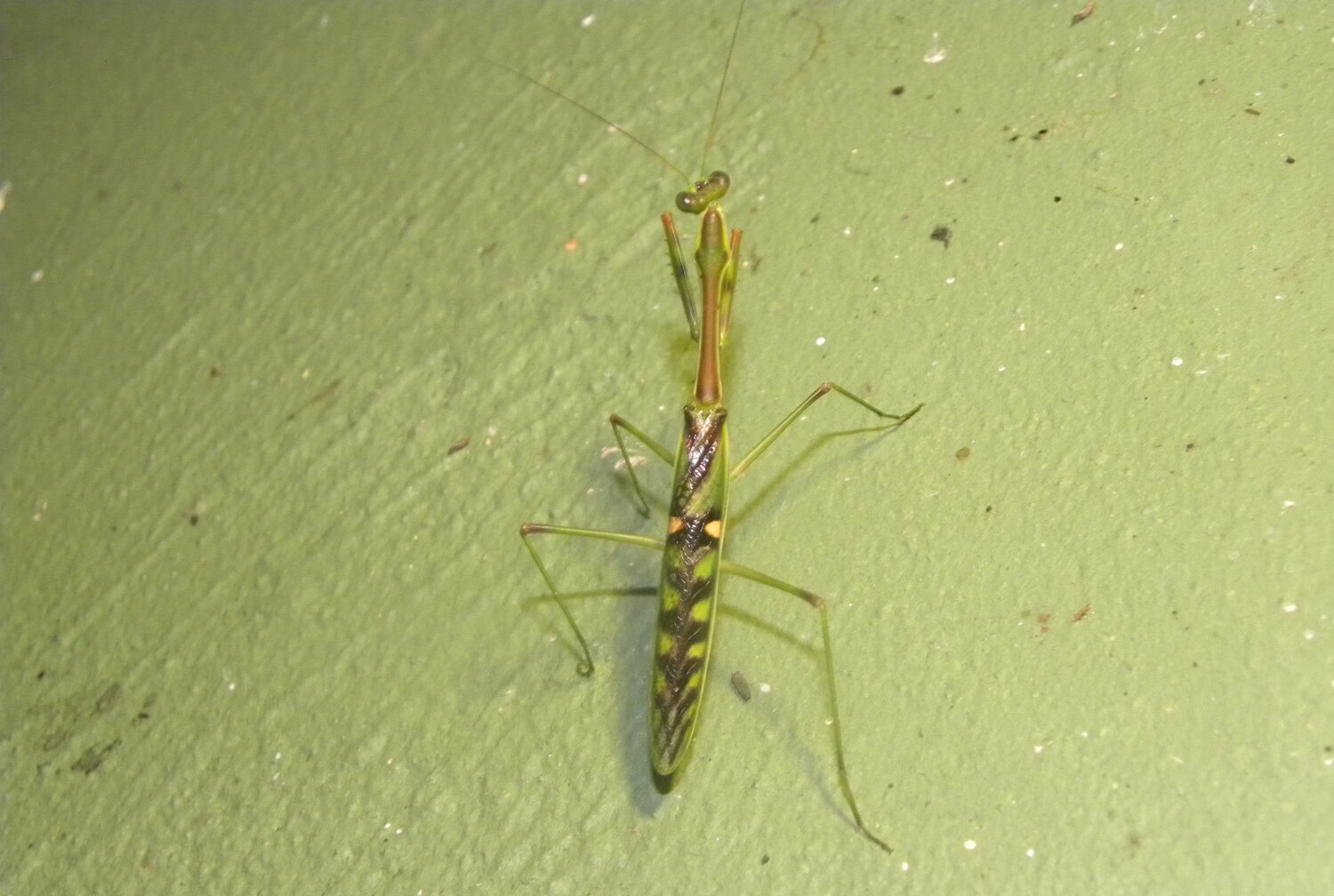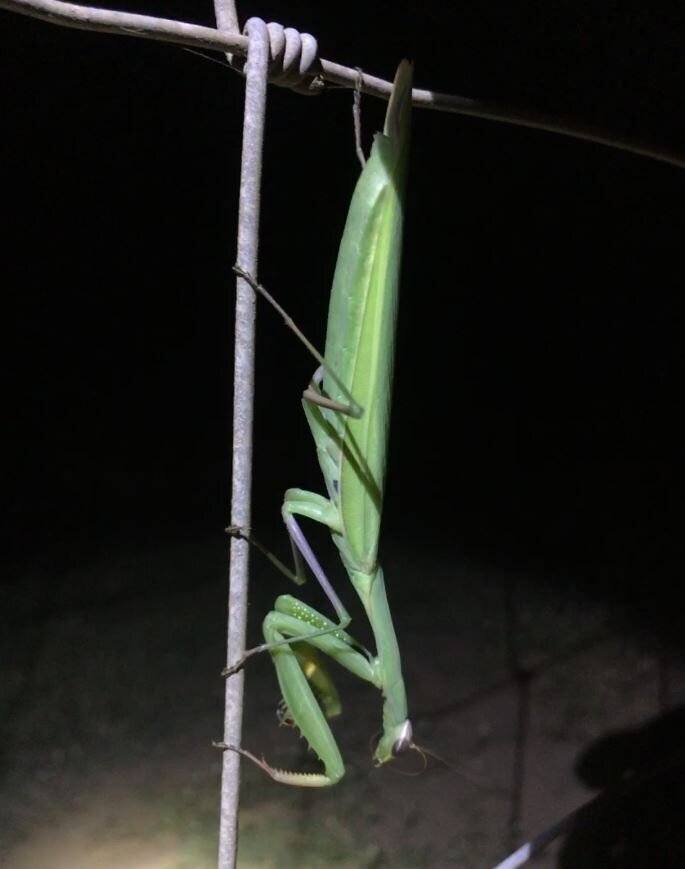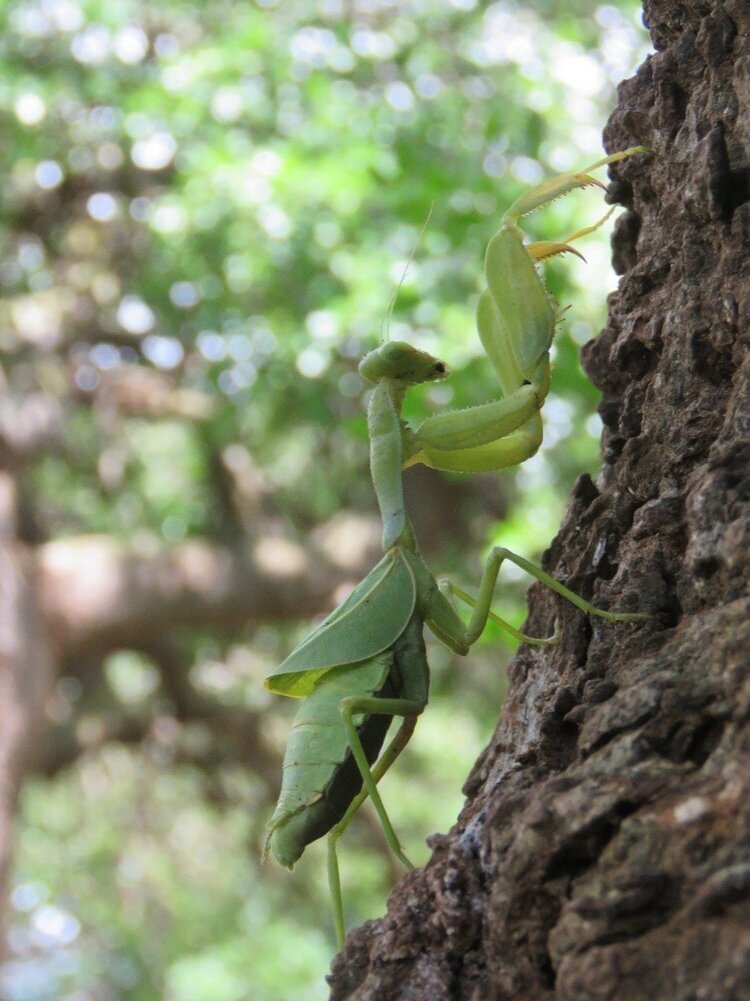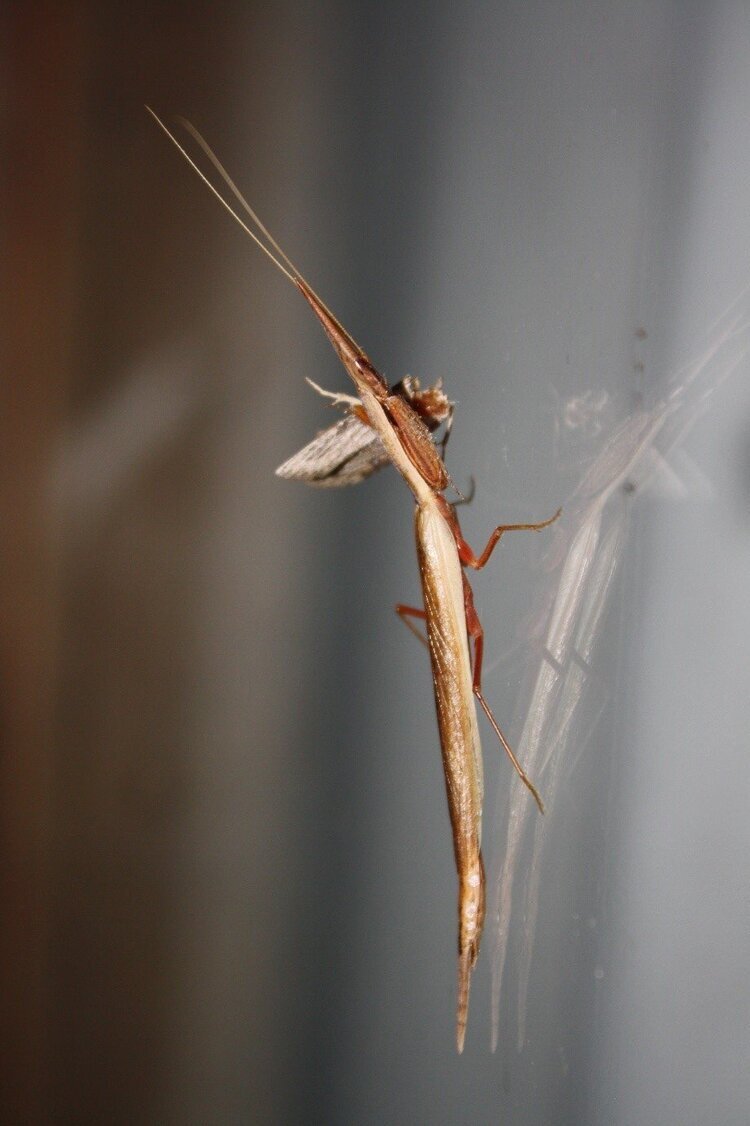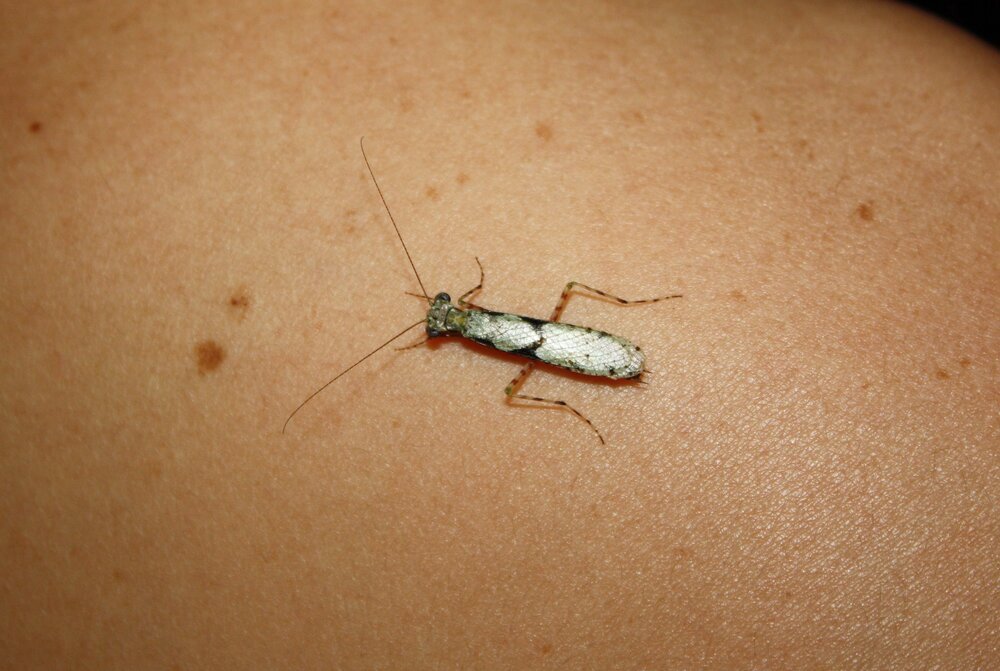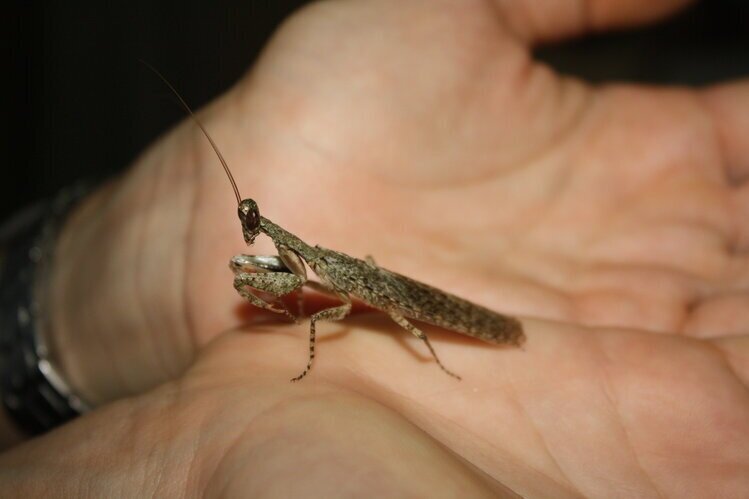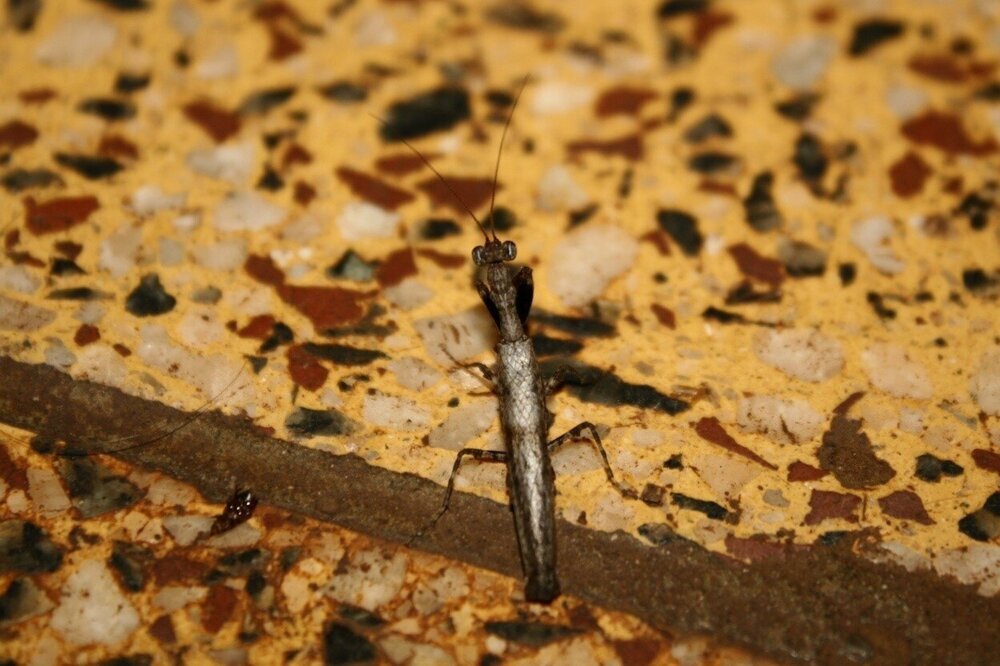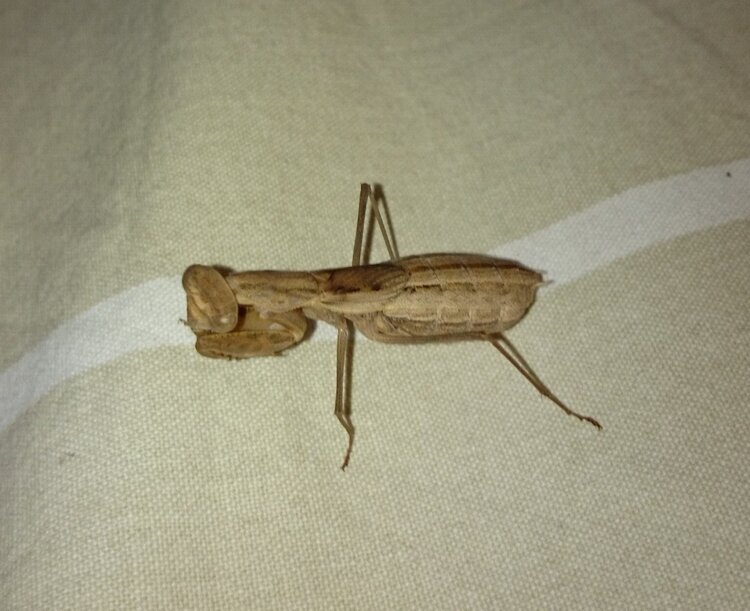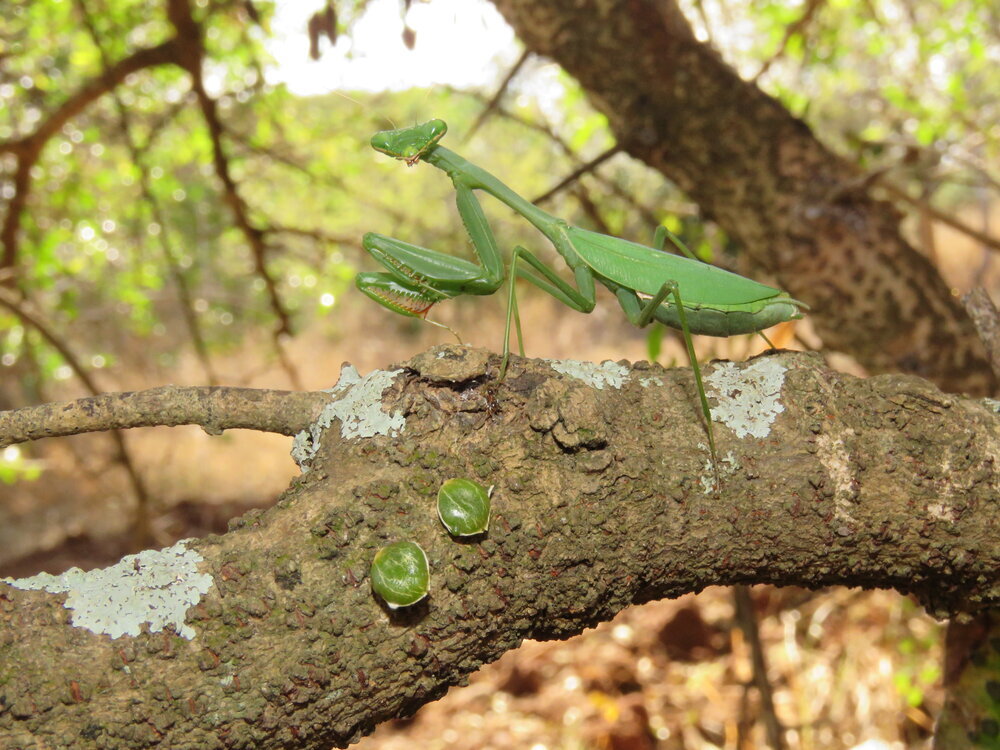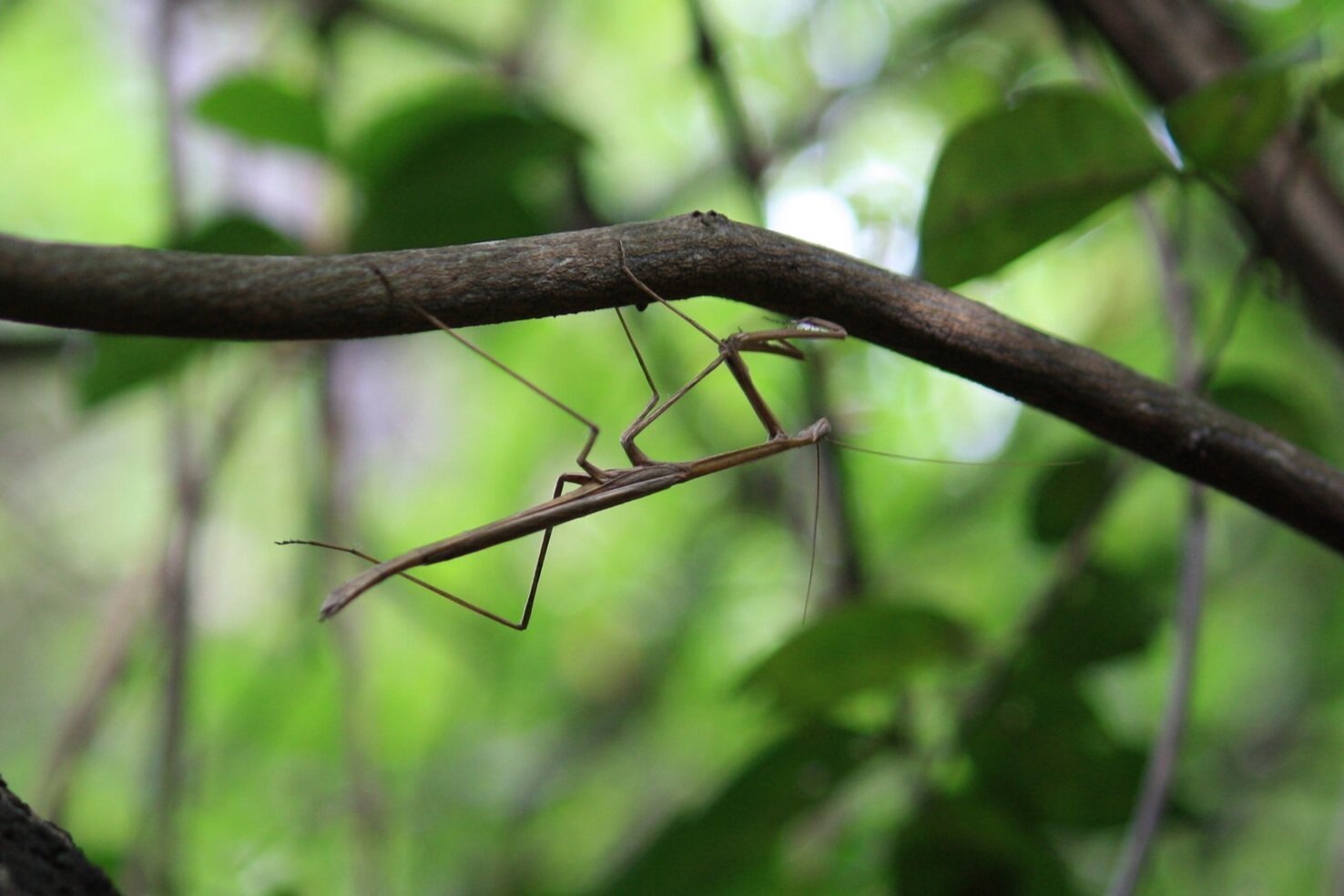THE MANTIDS OF UKUWELA
Biodiversity literally means the variety of living species found on Earth, including plants, animals, bacteria, and fungi. Did you know we have recorded 23 species of mantids so far at our Greater Ukuwela Reserve in KwaZulu-Natal, South Africa?
Common Name: Flower mantis, Scientific Name: Harpagomantis tricolor
What are praying mantids?? Praying mantids are insects that belong to the order Mantodea. They are predatory insects with unique and easily identifiable features, such as extremely mobile triangular heads, large compound eyes, and spiky forelegs adapted for grasping live prey. They are well known for their characteristic praying posture, which has earned them the name praying mantis. Their closest relatives are surprisingly not stick insects, but cockroaches and termites (Blattodea).
In many local species, male mantids can look different from female mantids. This is called sexual dimorphism. The nymphs (mantid babies) lack wings, often resemble the adults, and in some cases, mimic ants. Their abdomens are often curled over their body as shown below.
Mantid nymph resembling an ant.
Cone-headed mantid (Empusidae) nymph.
Photographed at Tembe Elephant Park.
There are about 2,400 mantis species in the world recorded thus far, with approximately 186 species recorded in South Africa.
To date, we have recorded 23 species of praying mantids on Wild Tomorrow Fund’s Greater Ukuwela Nature Reserve, and the list is growing.
When Wild Tomorrow Fund first purchased the property to form the Greater Ukuwela Nature Reserve, it had been farming land and was in need of a lot of rehabilitation and management. The species list for mantids (and other wildlife) was not as diverse, and there has been an obvious increase in the species diversity on the property since the land has become well-managed for wildlife. In this region, planned burning of vegetation (to mimic that of nature) has had a dramatic effect on improving the biodiversity of all species, especially plants, and noticeably for insects and birds as well. Because of this, we have started to see many more mantid species and we expect the list to continue to grow!
Common Name: Twig mantis (Male), Scientific Name: Popa spurca
Cilnia species (Female). Such a gorgeous lady!
We have found many beautiful and quite remarkable species of mantids on Ukuwela, however, the most special find to date has been the discovery of a species belonging to the genus Oxyelaea (Lichen mantids). This genus had never before been found in southern Africa - there is a possibility that the species found on Ukuwela is new to science. Currently, there are only 3 known species in the genus Oxyelaea from northern Africa. However, to identify if this is indeed a new taxon, a specimen needs to be sent to a Mantodea specialist - of which there aren’t many in the world (and none in South Africa). This discovery led us to note we had previously recorded males of this genus - possibly of the same species - in another reserve further north called Tembe Elephant Park.
Common Name: Lichen mantis (Female), Scientific name: Oxyelaea sp.
Common Name: Lichen mantis (Male), Scientific Name: likely the same species as the female pictured opposite.
Photographed at Tembe Elephant Park.
Mantids have unique-looking egg cases which are called oothecas and vary between species in both size and shape. See the photos below of some egg cases found on Ukuwela.
Egg case (ootheca), of Hoplocoryphella grandis (Stick mantis).
A large egg case (ootheca).
Newly hatched praying mantises.
Most praying mantids are ambush predators, however some ground-dwelling mantises such as Lygariella spp. (ground mantids) actively track and hunt their prey (cursorial hunting strategy), and others are generalists, hunting opportunistically in a wide range of environments. They feed on a great variety of small wildlife that they are able to overpower, which includes other mantids.
To avoid predation, mantodeans (mantids) are “masters of disguise” - which also allow them to better snare their prey. Species such as Pseudocreobotra wahlbergii (Eyed-flower mantis) are incredible flower mimics, and when threatened, they fan their wings displaying eyespot markings on their fore wings. These eyespots are used in threat display to frighten potential predators, but are all just a bluff.
Common Name: Eyed-flower mantis, Scientific name: Pseudocreobotra wahlbergii
Common Name: Eyed-flower mantis (nymph), Scientific name: Pseudocreobotra wahlbergii. Colours can vary between pink, green and yellow.
Photographed at Tembe Elephant Park.
Praying mantids also play an important role in many traditional cultures in South Africa. The ǀXam (part of the San peoples, often referred to as the Bushmen) have a deity named ǀKágge̥n. He is a known trickster and forms part of numerous myths…he can be wise, foolish, wearisome, or helpful. He is one of their most important spiritual beings and created many things that were of help to the San peoples. He could shape-shift to the form of any animal, but his usual animal form was a praying mantis. Zulu people traditionally respect mantids because they believe that the praying mantis is a female ancestral spirit and that it is a message from their ancestors.
Check out the gallery below to see photographs of the different species of praying mantids that have been found on Ukuwela to date! Enjoy!
